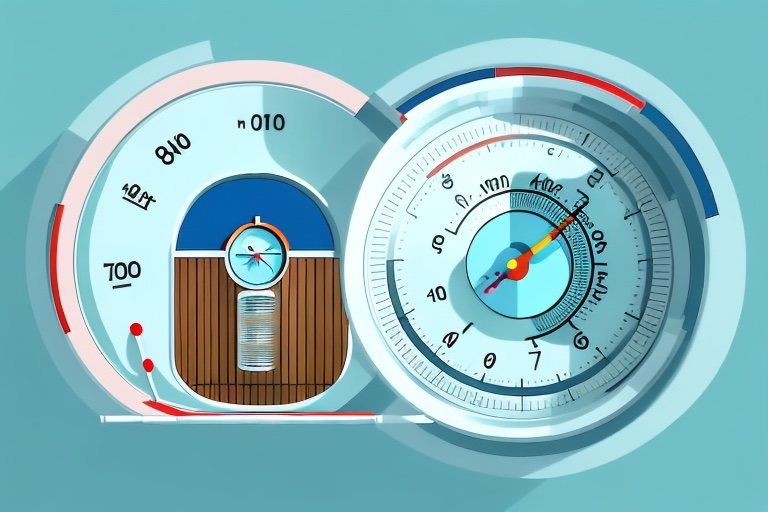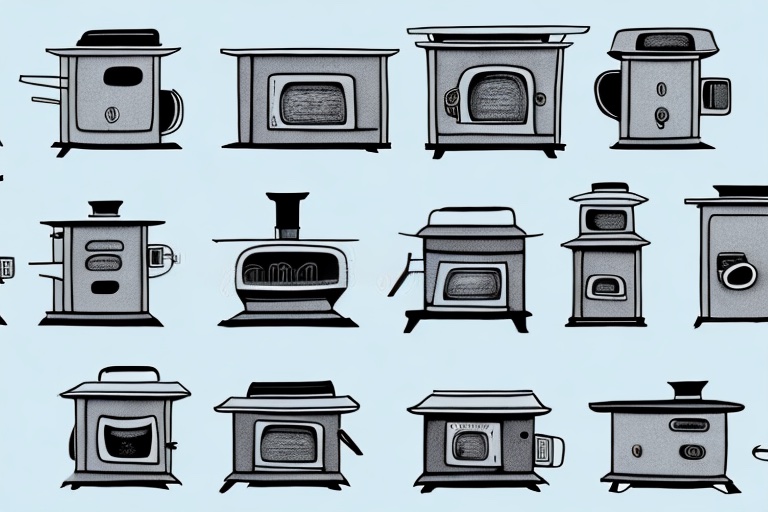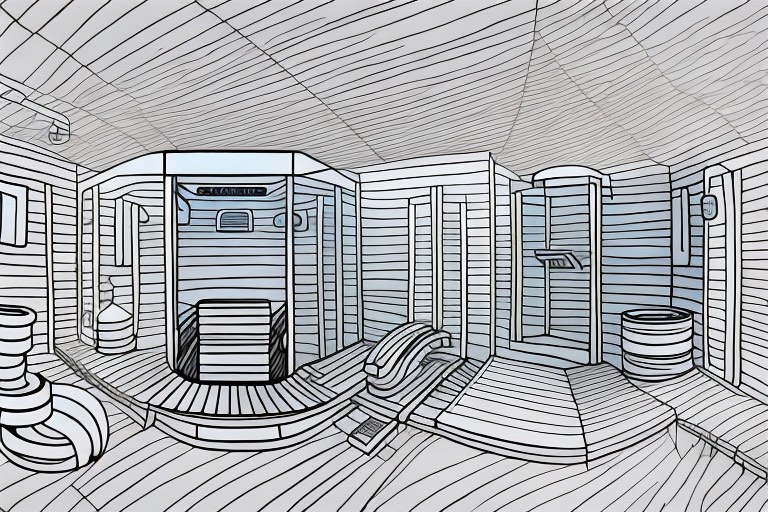Discover the Best Sauna Temperature for Your Health
A sauna can be a great way to unwind and relax after a long day. But did you know that it also offers a host of health benefits? From improved circulation to stress relief, sauna use has been shown to have a positive effect on many aspects of our health.
If you’re new to sauna use, you might be wondering: what is the best sauna temperature? The answer to that question depends on a number of different factors, including your personal preferences and the type of sauna you’re using. In this article, we’ll explore the science behind sauna temperatures, the health benefits of sauna use, and how to find the ideal sauna temperature for your needs.
The Science Behind Sauna Temperatures
The temperature inside a sauna can range from around 70°C to over 100°C, depending on the type of sauna and how it’s heated. But why is heat such a key component of sauna use?
There are several benefits to using a sauna, and one of the most important is the effect that heat has on the body. When you’re in a sauna, your body reacts to the heat by increasing blood flow and heart rate. This allows your body to more efficiently transport oxygen and nutrients to your muscles and organs, which can promote faster healing and recovery.
Heat can also stimulate the release of endorphins, which are natural painkillers that can help to alleviate muscle soreness and other types of discomfort. This is why many athletes and fitness enthusiasts use saunas as a form of post-workout recovery.
How Heat Affects the Skin
In addition to its internal benefits, heat can also have a positive effect on the skin. When you’re in a sauna, your body’s sweat glands are activated, which can help to flush out toxins and impurities from the skin. This can lead to a clearer, healthier complexion.
Heat can also help to improve circulation in the skin, which can promote collagen production and reduce the appearance of fine lines and wrinkles. This is why many people use saunas as a form of anti-aging therapy.
The Role of Humidity in Saunas
In addition to heat, saunas can also be categorized according to their humidity levels. Dry saunas, as the name suggests, have very low humidity levels and are heated primarily by rocks or coils. Steam saunas, on the other hand, add moisture to the air to create a more humid environment.
Both types of saunas have their own unique benefits. Dry saunas are often preferred by those who enjoy a more intense, sweat-inducing experience, while steam saunas are favored by those who prefer a more gentle, moisturizing experience.
Ultimately, the best option for you will depend on your personal preferences and objectives. Whether you’re looking to improve your physical performance, promote healthy skin, or simply relax and unwind, a sauna can be a valuable tool in achieving your goals.
Health Benefits of Sauna Use
Now that we understand how heat and humidity affect the body, let’s take a look at the specific health benefits that sauna use can offer:
Improved Circulation and Heart Health
As mentioned earlier, the increased blood flow that results from sauna use can have a positive impact on heart health. In fact, regular sauna use has been linked to a reduced risk of heart disease and stroke.
Improved circulation is also beneficial for overall health. It can help to deliver oxygen and nutrients to the body’s tissues, which can promote healing and reduce the risk of injury.
Stress Relief and Relaxation
Sauna use has been shown to promote relaxation and reduce feelings of stress. This can be attributed to the release of endorphins, as well as the overall calming atmosphere of a sauna.
Additionally, sauna use can help to promote better sleep. When the body is relaxed, it is easier to fall asleep and stay asleep throughout the night.
Muscle Recovery and Pain Relief
If you’ve ever experienced sore muscles after a workout, you know just how uncomfortable it can be. Sauna use can help to alleviate soreness and speed up the recovery process by increasing blood flow and reducing inflammation.
Furthermore, sauna use can help to reduce chronic pain associated with conditions such as arthritis and fibromyalgia. The heat can help to relax muscles and reduce tension, which can alleviate pain and discomfort.
Detoxification and Skin Health
Sauna use can also promote detoxification by increasing sweating and helping to flush toxins out of the body. This can improve skin health and give you a healthy, radiant glow.
In addition to detoxification, sauna use can also help to improve the overall health of your skin. The heat can help to open up pores and increase blood flow, which can promote healthy skin cell growth and reduce the appearance of fine lines and wrinkles.
Overall, sauna use can provide a wide range of health benefits. Whether you’re looking to improve heart health, alleviate muscle soreness, or simply relax and unwind, a sauna can be a great addition to your wellness routine.
Finding Your Ideal Sauna Temperature
Now that we’ve explored the benefits of sauna use, let’s talk about how to find the best temperature for your needs.
Saunas have been used for centuries as a way to relax and unwind. They can help relieve stress, ease muscle tension, and improve circulation. But finding the right temperature for your sauna experience is key to getting the most out of this therapeutic practice.
Personal Factors to Consider
The ideal sauna temperature will depend on a number of different factors, including your personal preferences and any health conditions you may have. If you have a heart condition or high blood pressure, for example, you may need to stick to lower temperatures.
It’s also important to consider your tolerance for heat. If you’re new to sauna use, you may want to start with a lower temperature and gradually work your way up. This will help your body acclimate to the heat and prevent any discomfort or overheating.
Another factor to consider is the time of day. Some people prefer to use the sauna in the morning to help energize them for the day ahead, while others find it more relaxing in the evening before bed.
Temperature Ranges for Different Sauna Types
As mentioned earlier, different types of saunas have their own unique temperature ranges. A traditional dry sauna, for example, might be heated to between 70°C and 90°C, while a steam sauna might be set to between 45°C and 65°C.
Infrared saunas, which use infrared heaters to emit radiant heat, typically operate at lower temperatures than traditional saunas. These saunas can be set to between 50°C and 60°C, making them a good option for those who are sensitive to high heat.
Experimenting with different temperature ranges can help you find the ideal sauna experience for your needs and preferences. Some people prefer a hotter sauna, while others find a lower temperature more comfortable. It’s all about finding what works best for you.
Experimenting with Sauna Sessions
Finally, it’s important to experiment with different sauna session lengths to find what works best for you. A typical session might last anywhere from 10 to 20 minutes, but again, this will depend on your personal preferences and tolerance for heat.
Some people prefer shorter sessions, while others enjoy longer periods of time in the sauna. It’s important to listen to your body and not overdo it, especially if you’re new to sauna use.
Remember to stay hydrated during your sauna sessions, and take breaks as needed to cool down and rest. With a little experimentation, you’ll be able to find the perfect sauna temperature and session length for your needs.
Safety Tips for Sauna Use
While sauna use can be extremely beneficial for your health, it’s important to take some basic precautions to ensure your safety:
Hydration and Electrolyte Balance
Make sure to drink plenty of water before and after your sauna session to stay hydrated. This is especially important if you plan to take a longer sauna session. When you sweat, your body loses water and electrolytes, which can lead to dehydration and an electrolyte imbalance. To replenish your electrolytes, you can drink a sports drink or other electrolyte-rich beverage. However, be sure to check the label for added sugars and artificial sweeteners, which can be harmful to your health.
Time Limits and Frequency of Sauna Sessions
Limit your sauna sessions to no more than 20 minutes at a time, and wait at least 30 minutes between sessions. This will give your body time to cool down and regulate its temperature. It’s also a good idea to avoid saunas entirely if you’re feeling unwell or have a fever. Sauna use can put additional stress on your body, and if you’re already sick, it can make your symptoms worse.
When it comes to the frequency of sauna sessions, it’s important to listen to your body. If you’re new to sauna use, start with one or two sessions per week and gradually increase the frequency as your body adapts. However, if you experience any discomfort or adverse effects, such as dizziness, nausea, or headaches, reduce the frequency or duration of your sauna sessions.
Recognizing and Responding to Overheating
While overheating in a sauna is rare, it’s important to know the signs so that you can respond appropriately. If you feel dizzy, nauseous, or have trouble breathing, exit the sauna immediately and seek medical attention if necessary. These symptoms can be a sign of heat exhaustion or heat stroke, which can be life-threatening if left untreated.
To prevent overheating, it’s important to monitor your body’s response to the sauna. If you start to feel uncomfortable or too hot, take a break and cool down. You can step outside for some fresh air or take a cold shower to lower your body temperature. Remember that sauna use should be a relaxing and enjoyable experience, so listen to your body and take breaks as needed.
In Conclusion
Sauna use can be extremely beneficial for your health, but finding the ideal sauna temperature will depend on your personal preferences and needs. Experiment with different temperatures and session lengths to find what works best for you, and remember to stay hydrated and take basic safety precautions to ensure that your sauna experience is enjoyable and beneficial.







